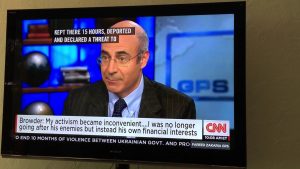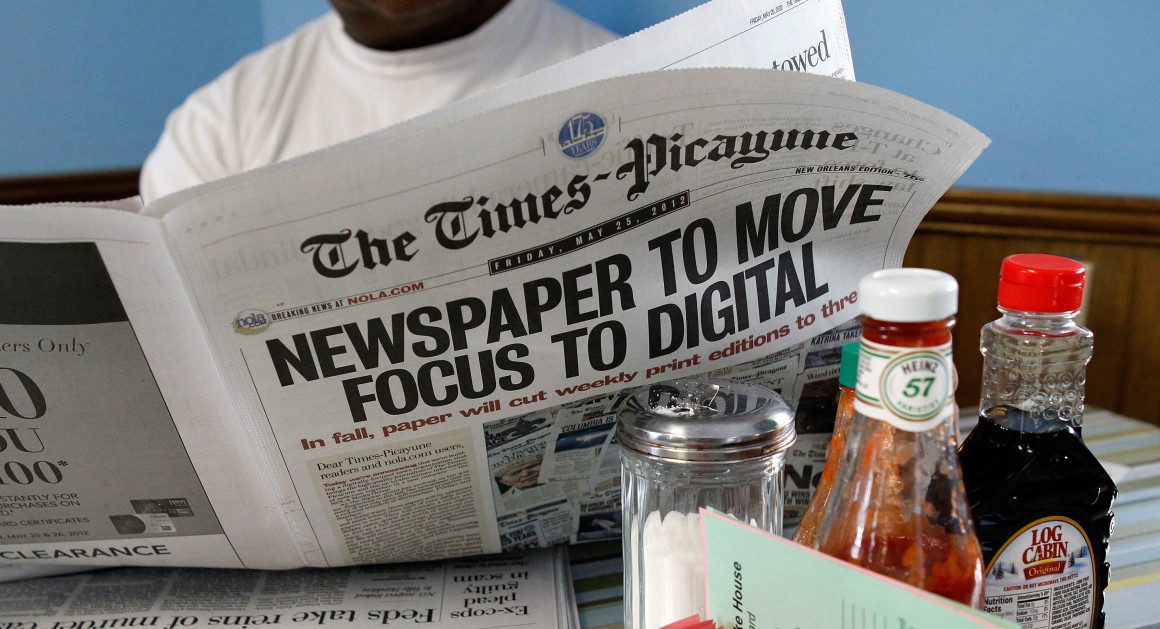Circulation, according to Henry Jenkins, Joshua Green, and Sam Ford in “Why Media Spreads,” refers to the idea that “top-down and bottom-up forces determine how material is shared across and among cultures in far more participatory (and messier) ways” (1). This concept is particularly important within the industry I want to work in someday—the newspaper industry. Traditionally, the journalism industry defined circulation as the range of distribution of a paper—the number of subscribers and people who bought the paper from newsstands. However, in the world of digital media, this definition has shifted to include a more participatory culture, which Jenkins et. al thinks of as “people who are shaping, sharing, reframing, and remixing media content in ways which might not have been previously imagined” (Jenkins 3).
Like Jordyn’s example in her post, journalistic media has varying degrees of circulation. As Jordyn mentioned, “journalistic pieces … may be talked about online on social media and then circulated to other platforms.” Newspapers can be given from one person to the other, while online news articles can be shared via Facebook, Twitter, and the news organization’s own website, and online news broadcasts can also be shared via YouTube.
Delivery, as defined by James Porter in “Recovering Delivery for Digital Rhetoric,” consists of body/identity, distribution/circulation, access/accessibility, interaction, and economics (208). First, journalism is unique in that there is ideally no body or identity, which includes a person’s “gender, race, sexual preference, social class, age, etc.” (212), in the work. Each piece of journalism, as I have been taught in my Intro to Journalism and Newswriting and Reporting classes, is meant to be completely objective and take out the individual opinions and features of the author.

In terms of the accessibility part of delivery, which “refers to the level of connectedness of … those with disabilities” (Porter 216), tradition print-based newspapers have not been able to reach many people with disabilities due to being such a text-based media. Now, however, with the emergence of screen readers, those with disabilities can have online news articles read to them so that they can still keep up with the news in a timely manner. Video-based news has also gotten better at closed captioning, particularly when posted to sites such as YouTube, so that those who are hard of hearing can also watch news broadcasts.
While print media does not exhibit a high degree of interactivity of delivery between creators and consumers, besides perhaps the “Letters to the Editor” section, online journalism allows easier sharing of the content, critical commentary, and even allows citizens to act as journalists within the online world. As I have also been taught in Newswriting, “Why Media Spreads” explains that ordinary citizens and journalists “can coexist within a more layered media environment, each holding the other accountable for its abuses, each scanning the other for potentially valuable content that might otherwise fall through the cracks” (Jenkins 42).
Finally, spreadability “refers to the technical resources that make it easier to circulate some kinds of content than others” (Jenkins 4), the attributes of a text that appeal to communities that spread the text, and the social networks that link the communities (4). As Jordyn observed, journalism is able to spread particularly quickly. People are always interested in news and will spread the news on a number of platforms for a variety of reasons to support the agendas of their groups. For example, I saw a recent news article about a California bill that was trending on Facebook because it was shared by a number of groups in a short amount of time. Conservative groups shared the bill encouraging people to call their representatives in favor of it, while liberal groups shared the article to express dissent. Religious groups and prayer groups shared the article to encourage their followers to pray for the representatives, and groups interested in prenatal care shared the article for purely informational reasons because the bill targets non-abortion prenatal care facilities. Each group shared the post for vastly different reasons, but the quickness of the sharing shows just how “spreadable” news can be.
Journalism is a unique blend of old and new technologies to create something that is circulatory in both print and online forms, deliverable in a one-of-a-kind form with no body or identity, and nearly matchless in spreadability, which is why I think it is a great example of all three of these terms.
Word Count: 771
Works Cited:
Jenkins, Henry, et. al. “Why Media Spreads.” Spreadable Media: Creating Value and Meaning in a Networked Culture. New York University Press, 2018.
Porter, James E. “Recovering Delivery for Digital Rhetoric.” Computers and Composition, 2009, p. 207-224.
